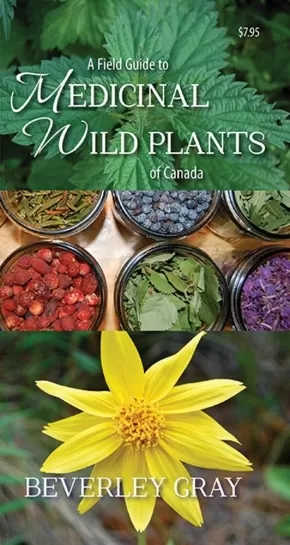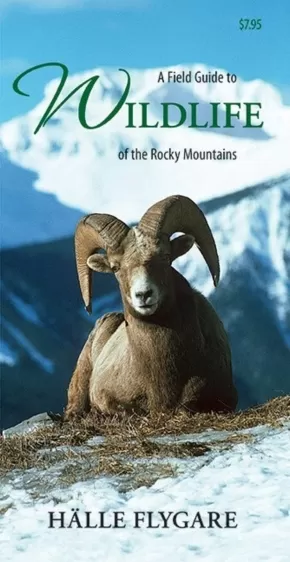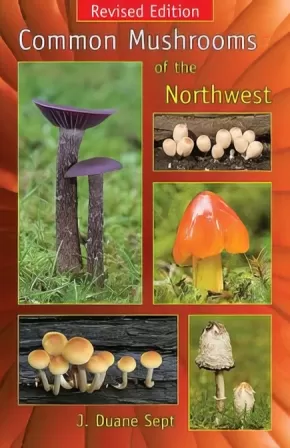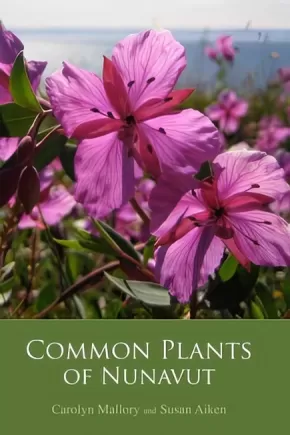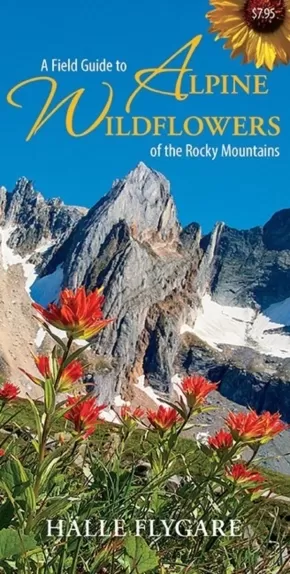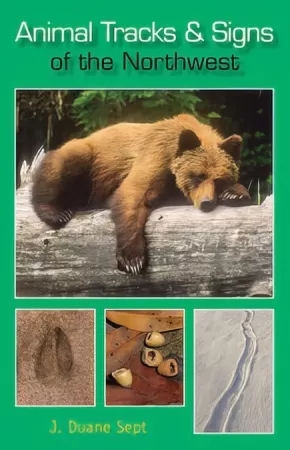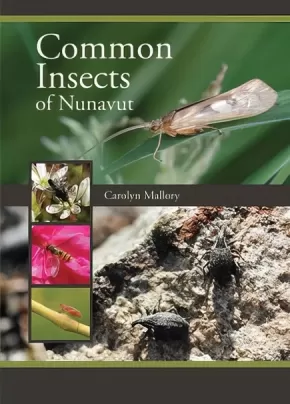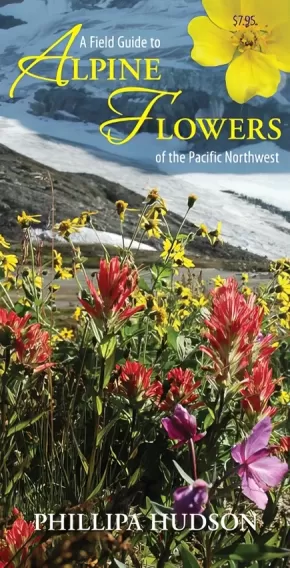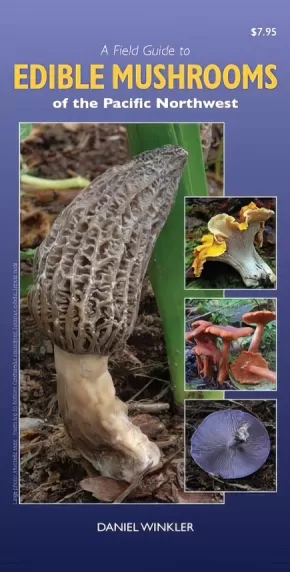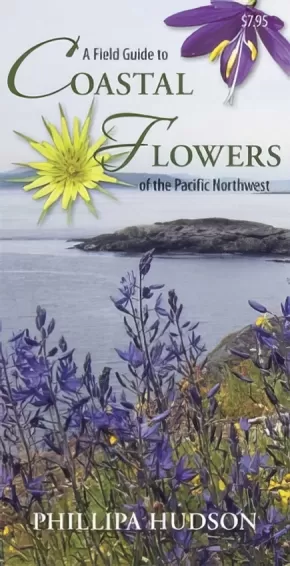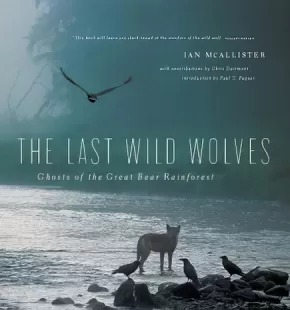Plants and Animals
Synopsis:
Nature heals! This compact field guide introduces readers to 26 common Canadian wild plants with extraordinary healing properties. Use arnica blossoms to heal muscle inflammation, improve digestion with chickweed and soothe a toothache with yarrow root--learning to identify and use wild medicinal plants is both fascinating and useful.
Each plant profile includes a colour photograph, identification and habitat information, as well as medicinal, cosmetic and culinary uses. Skilled herbalist Beverley Gray also includes tips on how to sustainably gather and safely use beneficial wild plants.
Additional Information
2 pages | 4.50" x 8.70" | 30 photographs | Pamphlet
Synopsis:
Was that a lynx or a bobcat? A nuthatch or a chickadee?
A Field Guide to Wildlife of the Rocky Mountains is a must-have for any visitor to the Rocky Mountain region of British Columbia, Alberta, Montana and Idaho.
Featuring over a hundred superb full-colour photos, this pamphlet provides an essential look at the variety of animals one is most likely to encounter on the area's park trails and roadsides. Information on the size of each animal, as well as the common and Latin names makes it easy to identify wildlife. Similar species are grouped by appearance for easy comparison. Handy on the trails, this field guide is also the perfect souvenir of the abundance of wildlife to be found in the Rocky Mountains.
Additional Information
2 pages | 4.60" x 8.80" | 105 Colour Photographs
Synopsis:
This easy-to-use handbook offers information about common mushrooms from Alaska and northwestern Canada to Saskatchewan in the east and south to the US states of the Pacific northwest. Using crisp, colourful images, Duane Sept illustrates more than 130 species of edible, poisonous and other interesting mushrooms. Inside you’ll find:
~ In depth descriptions for 130 species
~ Details on edible, poisonous, hallucinogenic and other fascinating fungi
~ More than 150 fascinating fungi
~ More that 150 spectacular photographs
~ Tips and techniques for freezing, canning and drying mushrooms
~ Additional information about mushroom ecology, making spore prints and more
~ New edition includes updated scientific names and new species
Synopsis:
Explore the fascinating world of Nunavut’s varied plant life in this richly visual, informative book.
Through beautiful photographs and a broad range of information including traditional knowledge about plant use compiled through interviews with Inuit elders readers will learn about the appearances, adaptations, life cycles, and habitats of the diverse array of plants that live in the North.
Far beyond a barren land of ice and snow, this book will introduce readers to the beautiful variations of plant life that abound on the tundra.
Additional Information
205 pages | 9.00" x 6.50"
Synopsis:
Restoring the use of wild plants in daily life for vibrant physical, mental, and spiritual health
• Explains how 3 classes of wild plants--aromatics, bitters, and tonics--are uniquely adapted to work with our physiology because we coevolved with them
• Provides simple recipes to easily integrate these plants into meals as well as formulas for teas, spirits, and tinctures
• Offers practical examples of plants in each of the 3 classes, from aromatic peppermint to bitter dandelion to tonic chocolate
As people moved into cities and suburbs and embraced modern medicine and industrialized food, they lost their connection to nature, in particular to the plants with which humanity coevolved. These plants are essential components of our physiologies--tangible reminders of cross-kingdom signaling--and key not only to vibrant physical health and prevention of illness but also to soothing and awakening the troubled spirit.
Blending traditional herbal medicine with history, mythology, clinical practice, and recent findings in physiology and biochemistry, herbalist Guido Masé explores the three classes of plants necessary for the healthy functioning of our bodies and minds--aromatics, bitters, and tonics. He explains how bitter plants ignite digestion, balance blood sugar, buffer toxicity, and improve metabolism; how tonic plants normalize the functions of our cells and nourish the immune system; and how aromatic plants relax tense organs, nerves, and muscles and stimulate sluggish systems, whether physical, mental, emotional, or spiritual. He reveals how wild plants regulate our heart variability rate and adjust the way DNA is read by our cells, controlling the self-destructive tendencies that lead to chronic inflammation or cancer.
Offering examples of ancient and modern uses of wild plants in each of the 3 classes--from aromatic peppermint to bitter dandelion to tonic chocolate--Masé provides easy recipes to integrate them into meals as seasonings and as central ingredients in soups, stocks, salads, and grain dishes as well as including formulas for teas, spirits, and tinctures. Providing a framework for safe and effective use as well as new insights to enrich the practice of advanced herbalists, he shows how healing “wild plant deficiency syndrome”--that is, adding wild plants back into our diets--is vital not only to our health but also to our spiritual development.
Synopsis:
With gorgeous full-colour photos arranged in an easy-to-use colour-coded chart for quick identification, this pocket-sized laminated pamphlet is perfect for taking along on walks and hikes through the Rocky Mountains, from BC and Alberta to New Mexico. Supplying English and Latin names, the distribution range of each species and average plant height and flower size, Halle Flygare shares his knowledge and pictures of flora gained through over 30 years as a photographer, park warden and guide in the Rocky Mountains.
Additional Information
2 pages | 4.50" x 9.00" | 112 Colour Photographs
Synopsis:
This laminated guide features twenty-six native trees commonly found from Alaska to Oregon, providing common and Latin names accompanied by colour photographs of identifying features such as bark, leaves or needles, flowers, cones, seeds and fruit. Information on identification, range and an illustration of each tree's silhouette make it a snap to distinguish a shore pine from a western white pine or a trembling aspen from a paper birch. Also included are traditional uses and other interesting tree facts and lore. For example, did you know that yellow cedar can live up to 5,000 years? Or that the bigleaf maple flowers are edible? Next time you go for a hike, pay attention to the forest and the trees with one of these laminated guides slipped into your back pocket or backpack.
Additional Information
2 pages | 37.00" x 9.00" | color photographs and illustrations | pamphlet
Synopsis:
Welcome to the secret world of tracks, sign and the animals that made them. Signs of the who, what and where of wildlife are all around us, even when their makers are too shy to come closer. This new guide is the key to unlocking the natural world that shares our environment, by day and by night. All we have to do is take the time to observe and interpret the signs.
The book features nearly 50 species with photos of tracks, scat and other signs, as well as drawings of tracks, track patterns, distribution maps and interesting details on the appearance, habitat and behavior of each species. Information on 20 additional species is also included, to help identify other species in the area and to distinguish one animal from another. There is even a ruler on the back cover. Tracking is detective work—fun, stimulating and very inspiring for anyone who is ready to “meet” the animals that share our landscape, by studying the fascinating clues they leave behind.
Synopsis:
Explore the fascinating world of Nunavut's insects in this richly visual, informative book. Through beautiful photographs and a broad range of information—including traditional knowledge compiled through interviews with Inuit elders—readers will learn about the appearances, adaptations, life cycles, and behaviors of the diverse array of arthropods that live in the North.
This detailed non-fiction book is perfect for middle school and high school students looking to learn about the insects that survive in one of the world's coldest climates.
Additional Information
32 pages | 9.00" x 6.50"
Synopsis:
This portable 8-fold guide is the perfect companion to Phillipa Hudson's easy-to-use Coastal Flowers of the Pacific Northwest, and features 112 spectacular photos of flowers found from the mid to alpine elevations on Vancouver Island and the Coast Mountains of the Pacific Northwest. Organized into a two-sided colour coded chart with a ruler printed on the back cover, this handy guide will aid in the quick identification of almost any flower one is likely to encounter in the higher realms of the Pacific Northwest, from exquisite yellow glacier lilies to elusive alpine pussy-toes. Labelled with both English and Latin names with descriptions of each species' distribution range and average plant height and flower size, this full-colour pamphlet is useful to budding botanists as well as more accomplished flower enthusiasts.
Additional Information
2 pages | 4.62" x 8.42" | 112+ Colour Photos | Pamphlet
Synopsis:
A Field Guide to Edible Mushrooms of the Pacific Northwest is a waterproof pocket-sized guide with full-colour photographs of mushrooms from Pacific Northwest trails and roadsides, forests and lawns. With this guide, identify over thirty common and easily-recognized edible mushrooms--and stay away from their not-so-edible look-alikes. Discover boletes, chanterelles, matsutake, shaggy mane, cauliflower, candy cap and many other tasty wild mushrooms. Easy to use and light to carry, this compact text is a must-have for all mushroom lovers who delight in searching for the next macrofungi bonanza.
Additional Information
2 pages | 37.00" x 9.00" | waterproof, pocket-sized guide with 50+ colour photographs

Synopsis:
Sea stars are amongst the most common and conspicuous invertebrates that thrive in the rich waters of the Pacific Northwest, from northern California to southeast Alaska. Worldwide there are more than 2,000 different species, but no other temperate region has a greater variety and abundance of these colourful and often very large echinoderms, which are closely related to sea urchins, sea cucumbers, brittle stars and feather stars. An underwater photographer, journalist and naturalist with over 40 years of diving experience, Neil McDaniel provides many original field observations to accompany his remarkable images of these fascinating animals.
This durable, water-resistant 8-fold field guide describes how to identify more than 30 species likely to be encountered by beach walkers and scuba enthusiasts in the Pacific Northwest. It also provides intriguing details about their behaviour, including how they move about, hunt for prey, reproduce and avoid predators. It is an ideal companion for family explorations to the sea shore, an invaluable reference in any scuba diver's kit bag and a useful addition to the home library.
Additional Information
2 pages | 3.21" x 8.92" | Pamphlet
Synopsis:
With gorgeous full-colour photos arranged in an easy-to-use colour coded chart for quick identification, the pocket-sized format is perfect for taking along on walks and hikes through both the Pacific Northwest countryside as well as the urban wilds of West Coast cities. Supplying English and Latin names, the distribution range of each species and average plant height and flower size, Phillipa Hudson shares her knowledge of coast flora gained through over 30 years as an active amateur botanist.
Synopsis:
For seventeen years, Ian McAllister has lived on the rugged north coast of British Columbia, one of the last places on the planet where wolves live relatively undisturbed by humans. The Last Wild Wolves describes his experiences over that period following two packs of wolves, one in the extreme outer coastal islands and another farther inland in the heart of the Great Bear Rainforest.
The behavior of these animals -- which depend on the vast old-growth forest and its gifts -- is documented in words and pictures as they fish for salmon in the fall, target seals hauled out on rocks in winter, and give birth to their young in the base of thousand-year-old cedar trees in spring. Most interestingly, scientific studies reveal a genetically distinct population of wolves -- one that is increasingly threatened by human incursions.
Reviews
"McAllister's extraordinary photographs come from waiting for his subjects to show themselves. He watches from tree platforms built over rivers where the wolves catch salmon, and he shoots while sitting motionless among packs that have consented to tolerate his presence among them . . . The resulting photos are thrilling, especially the close-ups of wolves' faces . . . and the panoramic landscape shots, but the word-pictures conjured by McAllister's text are equally vivid." —Victoria Times Colonist
Additional Information
192 pages | 11.00" x 10.50"
Synopsis:
This definitive month-by-month guide brings gardeners into the delicious world of edible landscaping and helps take a load off the planet as we achieve greater food security. Full of illustrative colour photos and step-by-step instructions, The Zero-Mile Diet shares wisdom gleaned from 30 years of food growing and seed saving with comprehensive advice on:
• Growing organic food year-round
• The small fruit orchard and backyard berries
• Superb yet simple seasonal recipes
• Preserving your harvest
• Seed saving and plant propagation
• Dirt-cheap ways to nourish your soil
• Backyard poultry—it’s less time-consuming than you
think
• Growing vegetables in the easiest way possible
• A–z guide to growing the best vegetables and herbs
Put organic home-grown fruits and vegetables on your table throughout the year, using the time-saving, economical and sustainable methods of gardening outlined in The Zero-Mile Diet. This book is about REAL food and how eating it will change our lives for the better.

